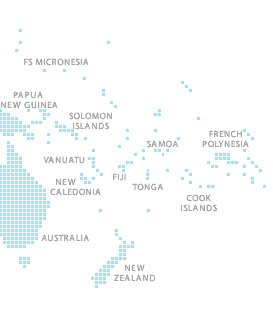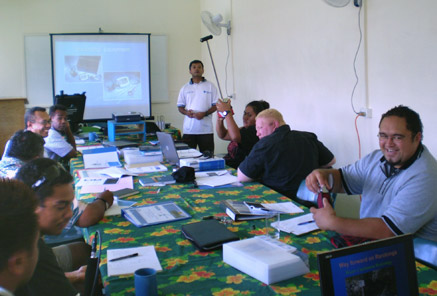Capacity building in the Pacific

|
||||||||

A major component in the WDM program is the development of local staff to implement efficient water demand management practices. This can be done through training and has been approached in two different ways.
1) First through traditional workshops were SOPAC and Wide Bay Water Corporation has held classes and practical exercises in a wide variety of WDM techniques and technologies including;
* Economic & Social Benefits of WDM
* Communication Strategies & Awareness Rising
* Development of Water Balance
* System Sectorisation
* Creation of District Metered Areas and
* Pressure Management Zones
* Water Conservation & Water Auditing
* Pipe Location & Leak Detection
* Reservoir Drop Test & Zero Pressure Test
* Data Logger Analysis, etc
The 1st WDM Workshop where arranged in Rarotonga, Cook Islands with additional participants from Solomon Islands and Samoa. The 2nd WDM Workshop where held in Phonpei with additional participants from Chuuk, Ebeye, Majuro and Yap.
2) The other Capacity Building activity is a new way of thinking training by bringing selected PIC water utility staff on one week field work on projects within the WDM programs workplan and 3 weeks of practical training at Wide Bay Water Corporation in Australia. The aim of the in-house training in Australia is to allow the participant complete visibility of how full scale water loss programs are managed. The two major tools used by Wide Bay Water Corporation are active leakage detection programs and pressure management. In the region they have a number of projects ranging from early stage planning to whole systems being pressure and leak managed.
This is the next logical step for knowledge transfer as the trainee work with all aspects of WDM from office to the field in this world leading company. In effect it is expected that this will prepare the participant to project manage similar work in their home country. Further It is hoped that these trainees can be part of a Pacific wide ‘buddy system’ where water utilities in the region assist each other to minimise water losses, possibly facilitated through the Pacific Water Association.

















